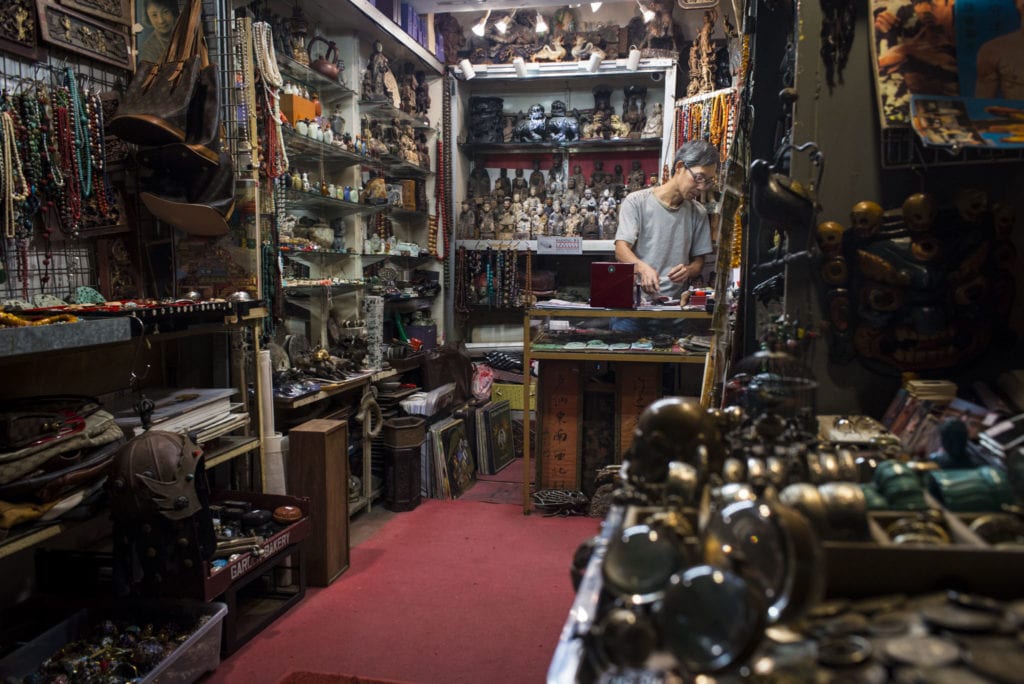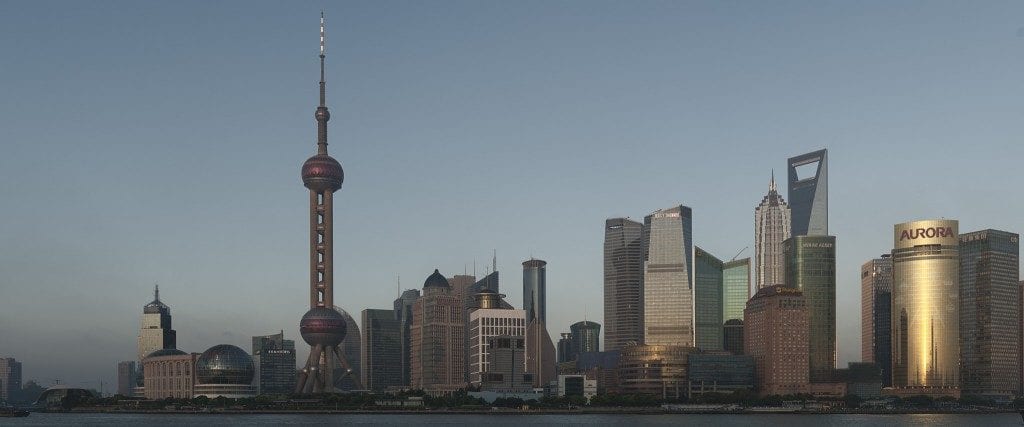
Upon arrival in Bangkok, or anywhere in Asia except maybe Singapore, the most striking difference will probably be the density of the sensory landscape. Your first time, your brain goes into overdrive processing the activity, the sounds, the heat, the sights and the smells. There’s almost a weight to it and its wonderful! As your brain begins to adjust and make sense of things, you start to notice all of the layers. It’s like the latent image becoming visible, slowly things you didn’t even notice begin materializing, revealing themselves to you. I lived in my suburban Bangkok neighborhood nearly a year before I realized there was a convenience store behind the thick row of street food stalls and behind that, a whole bunch of other shops (though, to be frank, “behind the milk” doesn’t exist in my fridge either so…). Life there is sometimes organized layers deep, sometimes layers high or both with signage and bustle to boot. It’s a lot of signal to sort through and once we get a grip on the physical world we have start on the incorporeal; the cultural contexts.
After five years of living on the other side of the world, two in Bangkok and three in Hong Kong, I’m starting to understand in which spheres and to what magnitude our approaches differ between the west and the east. I’ve traveled and worked in China, India, Bhutan, Tajikistan, Kyrgyzstan, Laos, Thailand, Vietnam, and Cambodia, and while I’m definitely no expert, I’m starting to get the idea. Still, I reached out to a couple creatives, production companies, and consultants (especially Christina Force) as well as a couple business friends and my locals barista and bartender to see what I could learn.
A crucial aspect of civil society in Asia is respect. Especially in China, Japan, and South East Asia; station, respect, and face are at the heart of all interaction. Incredibly nuanced systems (each of them different depending on which country we’re talking about) are in place that determine how groups of people behave toward one another. Consider that chapter in Tipping Point, “The Ethnic Theory of Plane Crashes,” for some idea. Deference to those of a higher station and specifically the belief that they deserve that deference, are not to be undermined or shirked in any way. This, in a very simple and incomplete way, is the unspoken rule of society that informs nearly every interpersonal endeavor.

Thankfully, and graciously, our counterparts here do not expect us to fully understand the rules but it can still get sticky if we do overstep. And if you do cross to the wrong side of these elusive conventions, wittingly or otherwise, there will likely be considerable inconvenience or resistance. And our straightforward, Git-er-done / no BS attitude is a fantastic way to tread all over those delicate social constructs. “Great!” you say. “How do I not cross the invisible and inconceivable social conventions and avoid setting off an international incident?” As best I understand it, 1. respect the social hierarchy and 2. try to frame problems (and solutions to those problems) in language that does not suggest blame or threaten retaliatory action. Don’t be adversarial or confrontational when things don’t go the way you expected them. If a client is significantly overdue in settling a final invoice and needs some prompting, say “No problem, we will gladly deliver the images the moment the final invoice has been satisfied.” instead of, “we’re not going to release the images until you pay the final invoice.” Subtle difference, but Christina saw this happen and it had a HUGE impact on how things were handled.
This applies at every stage of the process but let’s start with how this might apply during the bidding and negotiating process. The social hierarchy is understood in terms of status and a photographer’s fees are a direct representation of that value or credibility. If you’re seen to drop your fees too significantly during the negotiating process, it can be perceived as a revealing of your true worth. One trick, says Christina, is to leave enough room for the client’s negotiator to feel as though they’ve won…to make them feel like they’ve done their job properly. There’s also quite a lot of significance placed on visible status symbols (clothes, jewelry, etc.) so don’t wear t-shirts during negotiations. Or ever really.
This hierarchy also leads to some interesting situations within the crew. A good assistant in New York or Los Angeles would know her job, anticipate the needs of the photographer and act with initiative. Here however, that same initiative could be construed as an insult to the photographer’s ability to control the set or to know his business so assistants here generally don’t behave that way. This is true to differing degrees throughout Asia but it’s the reason in some cities you may need 3-4 assistants while in another you may need 6. I assisted a shoot a few years ago and we hired a crew of more than a dozen guys because each one had a very specific job. We seriously weren’t allowed to touch any of the equipment and those guys did all of the work (and they busted their butts doing it)! But when they weren’t doing their assigned job, they didn’t do anything. When you’re planning for a job, it’s important that you have a good familiarity with how the local market works so that you can make good crew decisions and manage the set appropriately. On set with crew, the photographer is the BOSS but is still expected to defer to the agency who defers to the client for all final decision.

Once the shot is in the can the images then pass on to a post-production phase no less fraught with social nuance. Regardless of what the style that you were hired for, it’s likely that the end image/feel may end up pretty far from how you initially understood the concept, since a lot of decision makers up the ladder will have had their say and put their fingerprint on it somewhere.
“Inevitably, this means the shots which end up being used will be the safest and most literal of the take. Then, on top of this, the post production may be pushed quite far so the shots could end up looking like composite illustrative images. (In China many ad agencies do their own post production now). Perhaps because culturally there is a strongly defined hierarchy, it seems that everyone wants to be involved in the process of a photo shoot and everyone has to have their say, and often those that make the final decisions are far removed from the creatives. Because it is not cool to disagree with someone higher up in the hierarchy, causing them to lose face. Iit is very difficult to wrestle back the integrity of a shot.” – Christina
And the right to decide goes all the way back to the beginning. “I think the clients have all the final say and make most of the decisions in Asia,” says Sebastian Tan, of Shooting Gallery Asia. “Instead of telling the client who is right for the job, it is very often presented to the client a number of recommendations and they decide on who they want to use for their projects.” He continues that in selecting the winning photographers for a job they “tend to require [in the winning photographer’s] portfolio, images that are close to the key visuals that need to be executed. Selections have the tendency to be very literal.” This doesn’t mean, however, that photographers should show images similar to what has already been made by that particular client. To the contrary, Christina emphasizes, “they are far more likely to book you for your authentic style, even if what they end up with is nothing like it.”

So, how do you get it done, you ask? According to Christina, a good production company is your answer, especially in China. Those guys will grease all the of the gears of the machine on the ground and navigate the logistical puzzles. “They are essential to helping your work get into an ad agency, to estimating jobs, and doing all the running around prior to a job. You really shouldn’t attempt to work in China without building some of these relationships first. (‘Some’ is key- they don’t really work with anyone exclusively!)” You can also expect some difficulties getting paid if you’re planning to work in China since there are taxation laws that restrict taking money out of the country. A good local production company can make it happen.
The next step is to go for a visit. Understanding production and the nuances of how it works in one place vs. another is critical to understanding how to even bid a job never mind succeeding should you win it. Expectations are different. Hierarchies will be different and differently enforced and respected. Even agency titles can be misleading: while seeming like familiar territory, the named parties may carry different responsibilities and play different roles than you’re used to. “You can’t expect to work in a market if you haven’t been there” says Michele Richards from IDC Worldwide. Christina agrees, “Show you can deal with the light, know the nuances of local production, and that you can find the right people.”
In this part of the world, cities that are a two to four-hour flight away from each other can be entirely different in virtually every way. Each market is its own beast and the best advice I heard echoed time and again is to focus on a single market for a while before moving on to another. Some will pay better than others but you’re more likely to join award-winning agencies in some markets while others are producing standard fare. Choose your destination city depending on what you hope to accomplish and focus your efforts there.

Special thanks to Christina Force for her guidance in work and in writing this article. Her knowledge and experience is irreplaceable. Also thanks to Sebastian Tan, of Shooting Gallery Asia; Michael Tam of Leo Burnett HK; and Andre Eichman, at Andre Eichman Photography.
Christina Force is a folio consultant and blogger with more than 15 years as head of a stills production company in New Zealand and Australia and head of the photographers agency The Collective Force. Having worked in New Zealand, Australia, Singapore, China, and the USA, she has more than a grasp on the finicky nature of the business in the region and if you’d like to glean more from her experience, hit up her blog. If you’re interested in breaking into the Asian market and are looking for some guidance, she’s definitely your captain.
Also, this coming November, the second Biennial Creative Asia Plus expo will be taking place in Singapore. Hosting workshops, talks, and portfolio reviews by award winning creatives in the Asian markets, this is a great opportunity for those looking to break into new territory.
This article can be found here
